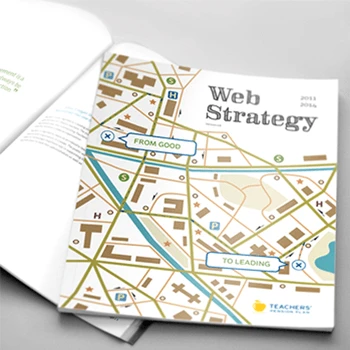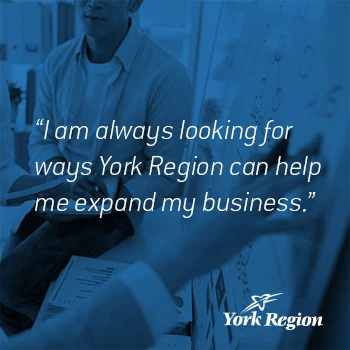What is customer journey mapping and why is it essential for modern businesses?
Customer journey mapping visualizes the entire end-to-end interaction that people have with your organization. It captures every touchpoint from initial awareness through purchase, usage, and ongoing relationship phases. According to the Experience Thinking framework, journey mapping is crucial because it reveals how customers move through different roles - from prospects to users to loyal advocates. This understanding helps organizations streamline delivery, cement loyalty, and identify opportunities for innovation across the complete experience lifecycle.
Tip: Start by identifying which customer segment's journey will have the biggest business impact if improved - this focuses your initial mapping efforts.
How does journey mapping differ from other customer research methods?
Journey mapping provides a holistic view of customer experiences over time, unlike research methods that capture snapshots or specific interactions. While surveys measure satisfaction at single points and usability testing focuses on specific tasks, journey mapping reveals how experiences connect and evolve throughout the customer lifecycle. It captures emotions, goals, pain points, and opportunities across multiple touchpoints, creating a comprehensive understanding that guides strategic decision-making rather than just tactical improvements.
Tip: Use journey mapping when you need to understand how different customer touchpoints affect each other, not just individual interaction performance.
What makes Akendi's approach to journey mapping unique?
Our journey mapping approach is grounded in the Experience Thinking framework, which examines how brand, content, product, and service experiences connect throughout the customer lifecycle. We combine behavioral science expertise with over 16 years of experience research to create maps that are both analytically rigorous and strategically actionable. Our methodology focuses on understanding the complete experience from initial product introduction to recycling and service cancellation, ensuring that every phase receives appropriate attention and resources.
Tip: Choose journey mapping partners who combine research expertise with design thinking capabilities - this ensures maps translate into implementable improvements.
When should organizations invest in customer journey mapping?
Journey mapping is valuable when organizations need to understand cross-departmental impact on customer experience, identify disconnects between touchpoints, or prioritize experience improvements. It's particularly important during digital transformation, service redesign, or when customer satisfaction metrics show problems but the causes aren't clear. The Experience Thinking approach suggests mapping when you need to connect the dots between different experiences that make up your complete customer relationship.
Tip: Invest in journey mapping when you have multiple stakeholders affecting the customer experience but lack shared understanding of the complete customer journey.
What's the relationship between journey mapping and Experience Thinking?
Journey mapping is a core tool within the Experience Thinking framework that helps visualize how customers move through different experience phases. Experience Thinking examines four key areas - brand, content, product, and service experiences - and journey mapping reveals how these areas connect throughout the customer lifecycle. This approach ensures that journey maps capture not just functional interactions but also emotional connections, brand perceptions, and service experiences that together create the complete customer relationship.
Tip: Use journey mapping to identify which of the four Experience Thinking quadrants need attention at different lifecycle phases.
How do you determine the scope and boundaries for a customer journey map?
Journey scope depends on your research questions and business objectives. We work with you to define journey boundaries based on customer goals, business impact, and available resources. Some maps focus on specific service interactions while others capture the complete product lifecycle from awareness to disposal. The key is ensuring the scope provides actionable insights for your organization while being manageable to research and implement. Clear boundaries prevent scope creep while ensuring important connections aren't missed.
Tip: Define journey boundaries by customer goals rather than organizational departments - this ensures the map reflects actual customer experiences rather than internal structures.
What role does persona research play in journey mapping?
Persona research provides the foundation for effective journey mapping by identifying who we're mapping journeys for and why their experiences matter. Different personas often have distinct journey patterns, motivations, and pain points that require separate consideration. Our approach starts with understanding personas' goals, behaviors, and contexts before mapping their specific journeys. This ensures that maps reflect actual user segments rather than generic customer assumptions, leading to more targeted and effective experience improvements.
Tip: Validate persona assumptions through customer interviews before journey mapping begins - outdated or inaccurate personas lead to irrelevant journey maps.
How do you address the complexity of multi-channel customer journeys?
Multi-channel journeys require systematic mapping of how customers move between different touchpoints and channels. We examine not just individual channel performance but how channels connect and influence each other throughout the customer experience. Using Experience Thinking principles, we map how brand, content, product, and service experiences flow across channels to identify disconnects and optimization opportunities. The goal is creating seamless experiences regardless of which channels customers choose to use.
Tip: Focus on channel transition points where customers often experience friction - these connections are usually the biggest improvement opportunities.
What research methods do you use for journey mapping?
We use a combination of qualitative and quantitative research methods to ensure comprehensive understanding. Primary methods include customer interviews, ethnographic observation, contextual inquiry, and behavioral data analysis. We also conduct internal stakeholder interviews to understand organizational perspectives and existing customer data. The research approach varies based on journey complexity and business context, but always includes direct customer input to validate assumptions and uncover insights that internal perspectives might miss.
Tip: Insist on primary research with actual customers rather than relying solely on internal assumptions or secondary data - real customer insights often reveal unexpected journey patterns.
How do you ensure journey maps reflect actual customer behavior rather than assumptions?
We ground all journey maps in real customer research through interviews, observation, and behavioral data analysis. Our methodology includes validation sessions where customers review draft maps and provide feedback on accuracy and completeness. We also triangulate insights from multiple research methods to verify findings and challenge assumptions. The Experience Thinking approach emphasizes understanding actual user experiences rather than designing ideal journeys that may not reflect reality.
Tip: Include customers in journey validation sessions to verify that maps accurately represent their actual experiences rather than organizational assumptions.
What data sources do you integrate into journey mapping research?
We integrate multiple data sources to create comprehensive journey understanding. This includes customer interview transcripts, behavioral analytics, support ticket data, survey responses, observational research notes, and existing customer research. We also analyze data from different touchpoints - website analytics, call center logs, social media interactions, and in-person service records. The key is combining quantitative data that shows what customers do with qualitative insights that explain why they behave in certain ways.
Tip: Audit existing customer data sources before starting journey mapping research to identify gaps and opportunities for data integration.
How do you handle situations where customer research reveals unexpected journey patterns?
Unexpected journey patterns often provide the most valuable insights for experience improvement. We treat surprises as opportunities to challenge assumptions and understand customer behavior more deeply. When research reveals unexpected patterns, we explore the underlying causes through additional interviews or observation. These discoveries often lead to innovative solutions that address previously unrecognized customer needs or reveal market opportunities that competitors have missed.
Tip: Embrace unexpected research findings rather than dismissing them - these insights often reveal the biggest opportunities for competitive advantage.
What's your approach to quantifying emotions and pain points in journey maps?
We use both quantitative metrics and qualitative research to understand customer emotions throughout their journey. This includes satisfaction surveys, Net Promoter Score tracking, customer effort scores, and emotional journey surveys. We also conduct interviews and observation sessions that capture emotional responses in context. The combination provides measurable data about emotional experiences while maintaining the human understanding that drives empathetic design decisions. Visual journey maps include emotional tracking that makes patterns visible to stakeholders.
Tip: Track emotions at specific journey moments rather than overall journey satisfaction - this reveals which interactions drive positive or negative feelings.
How do you validate journey maps with different customer segments?
Different customer segments often have distinct journey patterns that require separate validation approaches. We conduct validation sessions with representatives from each key segment, using appropriate research methods for their preferences and availability. Some segments prefer interviews while others respond better to surveys or workshops. We also analyze behavioral data by segment to verify that mapped journeys align with actual usage patterns. Segment-specific validation ensures that journey improvements serve all important customer groups effectively.
Tip: Plan validation activities that match each customer segment's communication preferences and availability rather than using one-size-fits-all approaches.
What role does competitive analysis play in journey mapping?
Competitive analysis helps contextualize your customer journeys within the broader market landscape. We examine how competitors approach similar journey phases and identify industry benchmarks for customer experience. This analysis reveals opportunities for differentiation and helps set realistic improvement targets. However, the primary focus remains on understanding your customers' actual experiences rather than copying competitor approaches. The goal is creating journeys that serve your specific customers better than alternatives available to them.
Tip: Use competitive analysis to identify industry gaps rather than copying competitor approaches - this helps create differentiated customer experiences.
How do you address data privacy and customer consent in journey mapping research?
Data privacy and consent are fundamental to ethical journey mapping research. We obtain clear consent for all research activities, explain how customer data will be used, and provide options for participation levels. All research data is anonymized and securely stored according to privacy regulations. We also provide transparency about research findings usage and offer participants access to insights that their contributions helped generate. Privacy protection builds trust that enhances research quality while meeting regulatory requirements.
Tip: Develop clear privacy policies for journey mapping research that participants can easily understand - transparency builds trust and improves research participation.
What elements are included in a comprehensive customer journey map?
Comprehensive journey maps include experience lifecycle phases, customer goals and motivations, activities and tasks, emotional responses, touchpoints and channels, supporting people and artifacts, context and frequency information, and identified pain points and opportunities. We also map the organizational support structure that enables each journey phase. This holistic approach ensures that maps capture both the customer perspective and the internal capabilities needed to deliver improved experiences across all phases of the journey.
Tip: Prioritize journey map elements based on your specific business objectives rather than trying to capture everything equally - focused maps are more actionable.
How do you visualize complex multi-touchpoint journeys effectively?
Complex journeys require visual hierarchy and strategic information design to remain useful. We use color coding, iconography, and layout principles to make information scannable while maintaining detail for deeper analysis. Different stakeholders need different levels of detail, so we often create multiple views of the same journey - overview versions for executives and detailed versions for implementation teams. The key is ensuring that complexity doesn't overwhelm usability while maintaining the rich insights that make journey maps valuable.
Tip: Create both high-level and detailed views of complex journeys so different stakeholders can engage with the information at appropriate levels of detail.
What's your approach to mapping current state versus future state journeys?
We typically start with current state mapping to understand existing customer experiences before designing future state improvements. Current state maps are grounded in research and identify specific pain points and opportunities. Future state maps envision improved experiences based on these insights and organizational capabilities. The Experience Thinking approach emphasizes that future state journeys should address identified problems while building on positive aspects of current experiences. Both maps are essential for planning realistic improvement strategies.
Tip: Use current state maps to identify which journey phases work well and should be preserved in future state designs rather than assuming everything needs to change.
How do you make journey maps actionable for different organizational stakeholders?
Actionable journey maps connect insights to specific organizational responsibilities and capabilities. We create stakeholder-specific views that highlight relevant pain points and opportunities for each department. Maps include prioritized recommendations with implementation difficulty and business impact assessments. We also facilitate sessions where stakeholders collaborate on improvement planning using the journey map as a shared reference. The goal is ensuring every stakeholder understands their role in delivering improved customer experiences.
Tip: Include implementation feasibility assessments in journey maps so stakeholders can prioritize improvements based on both customer impact and organizational capability.
What visual formats work best for different types of journey maps?
Visual format depends on map complexity, audience needs, and intended usage. Simple linear journeys work well in timeline formats, while complex multi-channel experiences might require swim lane or circular visualizations. We consider whether maps will be used for presentations, reference documents, or collaborative workshops when choosing formats. Brand integration ensures maps feel familiar and authoritative within organizations. The best format balances information clarity with visual appeal to encourage adoption and usage.
Tip: Choose journey map formats based on how they'll be used rather than what looks impressive - usability drives adoption and business value.
How do you incorporate organizational context into journey visualizations?
Organizational context includes the people, processes, and technology that support customer experiences at each journey phase. We map internal capabilities alongside customer experiences to identify where organizational strengths and weaknesses impact journey quality. This dual perspective reveals implementation requirements for journey improvements and helps prioritize changes based on organizational readiness. The visualization shows both what customers experience and what organizations need to deliver improved experiences.
Tip: Include organizational capacity indicators in journey maps so improvement planning considers both customer needs and implementation feasibility.
What role does storytelling play in effective journey map communication?
Storytelling makes journey maps compelling and memorable for stakeholders who need to understand and act on insights. We create narrative threads that connect journey phases and help stakeholders understand customer motivations and emotions. Stories make abstract concepts concrete and help organizations build empathy for customer experiences. Visual storytelling through journey maps also makes complex information more accessible to diverse audiences within organizations, increasing the likelihood that insights will drive meaningful action.
Tip: Include real customer quotes and specific scenarios in journey maps to make customer experiences tangible and relatable for internal stakeholders.
How do you ensure journey maps remain current and relevant over time?
Journey maps require regular updates as customer behavior and organizational capabilities evolve. We establish update schedules based on market dynamics and business changes, typically recommending annual reviews with quarterly check-ins for rapidly changing industries. We also create measurement frameworks that track journey performance over time, indicating when maps need revision. The key is treating journey mapping as an ongoing capability rather than a one-time project, ensuring maps continue providing value as conditions change.
Tip: Establish specific triggers for journey map updates, such as significant customer satisfaction changes or new product launches, rather than arbitrary time schedules.
How do you map the complete experience lifecycle from awareness to advocacy?
Experience lifecycle mapping follows the Experience Thinking principle of examining the complete journey from 'cradle to grave.' We map phases including awareness, research, purchase, onboarding, usage, maintenance, upgrade, and eventual replacement or cancellation. Each phase has distinct customer goals, emotions, and organizational touchpoints that require specific attention. This comprehensive approach reveals how early experiences influence later loyalty and advocacy, helping organizations design connected experiences that build lasting customer relationships throughout the entire lifecycle.
Tip: Pay equal attention to post-purchase phases as pre-purchase - many organizations over-invest in acquisition while neglecting retention and advocacy experiences.
What's the difference between customer, user, and client experiences in journey mapping?
According to Experience Thinking principles, people play different roles throughout their journey with your organization. Customers are prospects evaluating value and making purchase decisions. Users interact with products or services to accomplish tasks. Clients have ongoing relationships requiring support and service. Each role has different goals, expectations, and success metrics that require distinct consideration in journey mapping. Understanding these role transitions helps organizations design appropriate experiences for each phase.
Tip: Map role transitions explicitly in your journey maps - these transition points often reveal significant improvement opportunities and require specific organizational support.
How do you identify and prioritize the most critical journey moments?
Critical moments are identified through research analysis that examines emotional impact, business consequences, and customer decision-making influence. We analyze which journey phases most strongly predict customer satisfaction, retention, or advocacy. These 'moments of truth' often determine whether customers continue their journey or abandon it for alternatives. Using both quantitative data and qualitative insights, we help organizations focus improvement efforts on moments that create disproportionate impact on overall customer relationships.
Tip: Focus improvement efforts on journey moments that influence customer decisions about continuing the relationship rather than trying to optimize everything equally.
How do you map journeys for complex B2B sales cycles?
B2B journeys involve multiple decision-makers, longer timeframes, and complex evaluation processes that require specialized mapping approaches. We identify all stakeholders involved in the buying process and map their individual and collective journeys. B2B maps often include committee decision-making phases, vendor comparison processes, and implementation planning stages unique to business purchases. The Experience Thinking framework helps ensure that all stakeholders receive appropriate experiences throughout the extended evaluation and onboarding process.
Tip: Map individual stakeholder journeys within the broader B2B buying process to understand how different roles influence the overall purchase decision.
What's your approach to mapping journeys for subscription or recurring service models?
Subscription journeys include unique phases like trial periods, conversion decisions, ongoing usage patterns, renewal considerations, and cancellation processes. We examine how customer value perception evolves over time and identify factors that influence retention and growth. These journeys often include cyclical elements where customers regularly reconsider their subscription value. Mapping subscription journeys helps organizations optimize for long-term customer lifetime value rather than just initial acquisition success.
Tip: Pay special attention to renewal decision points in subscription journeys - understanding what influences these decisions helps improve retention strategies.
How do you capture emotional journey patterns that drive customer loyalty?
Emotional patterns are captured through research methods that go beyond satisfaction surveys to understand how feelings evolve throughout customer relationships. We conduct emotional journey interviews, observe customer reactions during key interactions, and track emotional indicators over time. The Experience Thinking framework emphasizes that loyalty is built through positive experiences across all four quadrants - brand, content, product, and service. Understanding emotional patterns helps organizations design experiences that build connection and trust rather than just functional satisfaction.
Tip: Track emotional changes between journey phases, not just satisfaction levels at individual touchpoints - emotional trajectories reveal loyalty drivers.
What role do external factors play in customer journey mapping?
External factors like market conditions, social trends, and competitive actions significantly influence customer journeys but are often overlooked in mapping exercises. We examine how external context affects customer goals, available alternatives, and decision-making criteria throughout their journey. This includes seasonal variations, economic conditions, and life stage changes that impact customer needs and priorities. Understanding external influences helps organizations anticipate journey changes and adapt experiences proactively rather than reactively.
Tip: Include external factor analysis in journey mapping to understand how market changes might affect customer behavior and experience expectations.
How do you map journeys that include both digital and physical touchpoints?
Omnichannel journeys require integrated mapping that examines how digital and physical experiences connect and influence each other. We research how customers move between online and offline touchpoints, identifying transition points and potential friction areas. Physical touchpoints often provide different value propositions than digital ones, and successful journey design leverages the strengths of each channel while ensuring seamless transitions. The mapping process examines both the individual touchpoint quality and the overall omnichannel experience flow.
Tip: Focus on touchpoint transition experiences where customers move between digital and physical channels - these transitions often create the most significant journey friction.
How do you facilitate internal stakeholder collaboration during journey mapping?
Internal collaboration is essential for creating journey maps that reflect organizational reality and capability. We facilitate workshops where different departments share their perspectives on customer interactions and identify dependencies between touchpoints. These sessions often reveal disconnects between departmental understanding of customer experiences. Collaborative mapping helps break down silos and builds shared ownership of customer experience improvements across the organization. The process creates alignment around customer needs and improvement priorities.
Tip: Include representatives from all departments that touch the customer journey, even if their involvement seems minor - unexpected insights often come from unexpected sources.
What's your approach to getting leadership buy-in for journey mapping initiatives?
Leadership buy-in requires demonstrating clear connections between journey insights and business objectives. We present journey mapping as a strategic tool for understanding customer behavior patterns that drive revenue, retention, and growth. Initial presentations focus on business impact rather than methodology, showing how journey insights can improve key performance indicators. We also provide examples of how other organizations have used journey mapping to achieve measurable business results that resonate with leadership priorities.
Tip: Connect journey mapping benefits to specific business challenges that leadership is already focused on solving rather than presenting it as a general improvement initiative.
How do you manage conflicting stakeholder perspectives on customer journeys?
Conflicting perspectives are common because different departments often see only portions of customer journeys. We use customer research as the neutral ground for resolving conflicts, letting customer voices guide decisions rather than internal politics. Collaborative workshops help stakeholders understand each other's constraints and customer touchpoint responsibilities. When conflicts persist, we escalate to decision-makers with clear customer impact analysis. The Experience Thinking approach helps by providing a framework for examining how different perspectives contribute to the complete customer experience.
Tip: Document stakeholder perspective differences during journey mapping - these conflicts often reveal organizational issues that need attention beyond the mapping project.
What training do you provide to help internal teams use journey maps effectively?
We provide training that helps internal teams understand journey mapping methodology, interpret map insights, and apply findings to their specific responsibilities. Training includes workshops on reading journey maps, identifying improvement opportunities, and measuring journey performance. We also provide ongoing consultation to help teams integrate journey thinking into their regular decision-making processes. The goal is building internal capability to maintain and update journey maps rather than requiring external support for ongoing usage.
Tip: Focus training on practical application within participants' current roles rather than general journey mapping theory - this increases adoption and usage of journey insights.
How do you ensure journey mapping insights influence organizational decision-making?
Translating insights into decisions requires connecting journey findings to existing organizational processes and priorities. We work with stakeholders to identify how journey insights can inform budget allocation, product development, marketing strategy, and operational improvements. Journey maps become reference tools for evaluating proposed changes and measuring improvement success. We also establish regular review processes where journey performance is assessed and updated priorities are identified based on changing customer needs.
Tip: Integrate journey map reviews into existing business planning cycles rather than treating them as separate activities - this ensures insights influence actual decision-making.
What's the role of customer service teams in journey mapping?
Customer service teams provide invaluable insights about customer pain points, common questions, and journey breakdown patterns. They often understand customer frustrations better than other departments because they handle problems when journeys fail. We include customer service perspectives in mapping workshops and use support data to identify journey friction points. Service teams also play crucial implementation roles because they often serve as journey recovery points when other touchpoints create problems for customers.
Tip: Include customer service team insights early in journey mapping research - they often identify pain points that other stakeholders might miss.
How do you help organizations build internal journey mapping capabilities?
Building internal capabilities involves training, mentoring, and gradual responsibility transfer over multiple projects. We provide methodology training, share templates and tools, and mentor internal facilitators during their first independent mapping exercises. Many organizations start with external facilitation and gradually take ownership as their skills develop. We also help establish governance processes for maintaining and updating journey maps as organizational capabilities and customer needs evolve over time.
Tip: Start capability building with enthusiastic stakeholders who can become internal champions and mentors for broader organizational journey mapping adoption.
What role does change management play in journey mapping implementation?
Journey mapping often reveals needed changes in organizational structure, processes, or priorities that require careful change management. We help organizations plan implementation approaches that consider change readiness, stakeholder resistance, and resource requirements. Journey insights sometimes challenge existing operational models or performance metrics, requiring leadership support for successful transformation. Change management ensures that journey improvements are sustainable rather than temporary adjustments that revert when attention shifts elsewhere.
Tip: Assess organizational change readiness before journey mapping begins so implementation planning can address cultural and structural barriers to improvement.
How do you prioritize journey improvement opportunities for maximum business impact?
Prioritization balances customer impact with implementation feasibility and business objectives. We assess improvement opportunities based on customer satisfaction influence, revenue potential, implementation difficulty, and strategic alignment. High-impact, low-effort improvements often provide quick wins that build momentum for larger initiatives. We also consider how improvements in one journey phase might influence other phases, using the Experience Thinking principle that experiences are connected and should be optimized holistically rather than in isolation.
Tip: Start with journey improvements that require minimal organizational change but create visible customer impact - early wins build support for more ambitious initiatives.
What measurement frameworks do you establish for tracking journey performance?
Journey measurement frameworks include both leading and lagging indicators that track customer experience quality and business outcomes. We establish metrics for each journey phase, emotional tracking systems, and overall journey success measures. Key performance indicators might include completion rates, satisfaction scores, effort levels, and progression through lifecycle phases. Measurement frameworks also include methodology for regular data collection and analysis to identify trends and improvement opportunities over time.
Tip: Include both quantitative metrics and qualitative feedback in journey measurement - numbers show what's happening while customer stories explain why.
How do you create implementation roadmaps from journey mapping insights?
Implementation roadmaps translate journey insights into specific projects with timelines, resource requirements, and success metrics. We work with stakeholders to sequence improvements based on dependencies, available resources, and business priorities. Roadmaps include quick wins, medium-term improvements, and long-term transformation initiatives that together create the desired future state journey. The Experience Thinking approach ensures that roadmaps address all four experience quadrants rather than focusing on isolated improvements.
Tip: Create phased implementation roadmaps that deliver value incrementally rather than waiting for complete journey transformation before seeing benefits.
What ongoing support do you provide after initial journey mapping is complete?
Ongoing support varies based on organizational needs and preferences. We provide implementation consultation, measurement system setup, regular journey performance reviews, and updates based on changing customer behavior or business context. Some organizations prefer periodic check-ins while others want hands-on implementation support. We also facilitate regular stakeholder sessions to review journey performance and identify new improvement opportunities as organizations mature in their customer experience capabilities.
Tip: Plan ongoing support needs during initial journey mapping so you have appropriate resources available for implementation success and journey evolution.
How does journey mapping drive service innovation opportunities?
Journey mapping reveals innovation opportunities by identifying unmet customer needs, inefficient processes, and gaps in the competitive landscape. Innovation often emerges from understanding why customers behave in unexpected ways or struggle with existing solutions. We examine journey patterns to identify where new services could address customer pain points or where existing services could be redesigned for better effectiveness. The Experience Thinking framework helps identify innovation opportunities across brand, content, product, and service experiences throughout the customer lifecycle.
Tip: Look for innovation opportunities in journey transition points where customers currently struggle to move from one phase to the next smoothly.
What's your approach to designing proactive service experiences from journey insights?
Proactive service design anticipates customer needs based on journey position and historical patterns. Journey mapping reveals predictable customer needs at different lifecycle phases, enabling organizations to provide support before customers realize they need it. This might include educational content at decision points, maintenance reminders during usage phases, or upgrade recommendations when customer needs evolve. Proactive design creates experiences where organizations demonstrate understanding of customer situations and provide value without being asked.
Tip: Use journey mapping to identify predictable customer needs that can be addressed proactively rather than waiting for customers to request help.
How do you use journey mapping to improve customer onboarding experiences?
Onboarding mapping examines how customers transition from purchase decision to successful product or service usage. This critical journey phase often determines whether customers achieve their goals and continue their relationship with your organization. We map onboarding goals, identify common obstacles, and design support structures that help customers succeed quickly. Effective onboarding design reduces time to value while building confidence and satisfaction that influences long-term customer relationships.
Tip: Map onboarding success from the customer's perspective rather than organizational completion metrics - customer goal achievement drives satisfaction and retention.
What's your approach to mapping customer recovery journeys when experiences fail?
Recovery journeys are crucial because how organizations handle problems often influences customer loyalty more than perfect experiences do. We map typical failure scenarios and current recovery processes to identify improvement opportunities. Recovery mapping examines how quickly problems are identified, how customers are supported during resolution, and how relationships are rebuilt after issues are resolved. Effective recovery design often creates stronger customer relationships than if problems had never occurred.
Tip: Design recovery journeys proactively rather than reactively - planned recovery experiences are more effective than improvised problem-solving approaches.
How is AI transforming customer journey mapping and what should organizations consider?
AI is revolutionizing journey mapping through automated data analysis, pattern recognition, and predictive journey modeling. AI can process vast amounts of customer interaction data to identify journey patterns that human analysis might miss. Machine learning algorithms can predict journey outcomes and suggest personalized interventions. However, AI cannot replace human insight about customer motivations and emotions that drive journey behavior. Organizations should use AI to enhance human understanding rather than automate journey strategy. The Experience Thinking principle of starting with human experience remains essential even as AI tools become more sophisticated.
Tip: Use AI tools to analyze journey data patterns but maintain human oversight for interpreting insights and making strategic decisions about customer experience improvements.
What's your approach to mapping digital transformation journeys?
Digital transformation journeys examine how customers adapt to new digital touchpoints and capabilities while maintaining service quality expectations. We map both current analog journeys and proposed digital alternatives to understand transition requirements and potential adoption barriers. Digital transformation mapping considers customer digital literacy, preference variations, and situations where digital solutions might not be appropriate. The goal is designing transformation approaches that improve customer experiences rather than just reducing organizational costs.
Tip: Include customer choice between digital and traditional options in transformation journey design - forced digital adoption often creates negative customer experiences.
How do you map journeys across multiple digital platforms and devices?
Multi-platform journeys require understanding how customers move between devices and platforms throughout their experience lifecycle. We examine how context changes affect platform choice and how information and progress transfer between different digital touchpoints. Cross-platform mapping identifies where customers experience friction during transitions and where consistent experiences are most important. The approach considers both technical integration requirements and customer behavioral patterns that drive platform usage decisions.
Tip: Focus on information continuity between platforms rather than identical experiences - customers expect appropriate adaptation to each platform's strengths and constraints.
What role does data analytics play in understanding customer journey patterns?
Data analytics provides quantitative foundation for understanding journey patterns, completion rates, abandonment points, and behavioral variations. We analyze customer interaction data to identify common journey paths, timing patterns, and success indicators. Analytics help validate qualitative research insights and identify trends that interviews might miss. However, data analytics alone cannot explain why customers behave in certain ways or how they feel about their experiences. Effective journey mapping combines analytical insights with human understanding through research.
Tip: Use data analytics to identify journey patterns and problems, then conduct customer research to understand the underlying causes and improvement opportunities.
How do you structure journey mapping engagements for different organizational sizes?
Engagement structure adapts to organizational complexity, available resources, and existing customer experience maturity. Smaller organizations might need focused journey mapping for specific customer segments, while larger enterprises often require multi-journey analysis across different business units. We work with organizations that have established customer experience programs and those just beginning their journey mapping efforts. Engagement models include full-service research and mapping, collaborative workshops with internal teams, or consultation and training approaches.
Tip: Assess your organization's customer experience maturity before selecting an engagement model to ensure the approach matches your current capabilities and growth objectives.
What investment should organizations expect for comprehensive journey mapping?
Journey mapping investment depends on research scope, number of customer segments, journey complexity, and deliverable requirements. Investment includes research design and execution, stakeholder collaboration time, analysis and synthesis work, visualization creation, and implementation planning support. Many organizations find journey mapping cost-effective because it prevents costly improvements to low-impact journey phases while identifying high-value opportunities that drive significant business results. The collaborative approach often generates insights that justify implementation investments through improved customer retention and satisfaction.
Tip: Consider journey mapping investment in the context of customer lifetime value improvements and reduced improvement project risk rather than just upfront research costs.
How do you work with organizations that have existing customer research or analytics capabilities?
We integrate with existing research capabilities rather than duplicating efforts or replacing established systems. Our approach builds upon existing customer insights, analytics data, and research infrastructure while adding journey-specific methodology and analysis. We work with internal research teams to enhance their capabilities and provide specialized journey mapping expertise that complements their general customer research skills. Integration leverages organizational knowledge while adding external perspective and specialized methodology.
Tip: Audit existing customer research capabilities before engaging external journey mapping support to identify areas where external expertise adds the most value.
What makes Akendi's journey mapping approach different from other research firms?
Our approach combines deep behavioral science expertise with the Experience Thinking framework that examines how brand, content, product, and service experiences connect throughout customer lifecycles. We bring over 16 years of experience creating intentional experiences across multiple industries and business contexts. Our methodology balances analytical rigor with practical implementation focus, ensuring that journey insights translate into business results. We focus on understanding actual customer behavior rather than designing ideal journeys that may not reflect reality.
Tip: Choose journey mapping partners based on their research methodology and implementation track record rather than just visualization capabilities or portfolio attractiveness.












